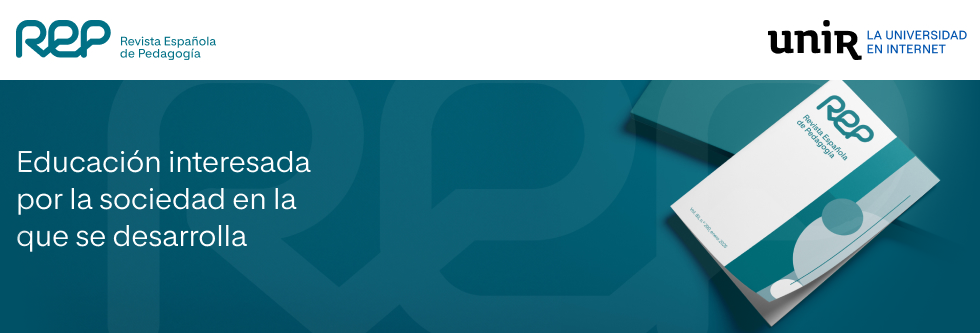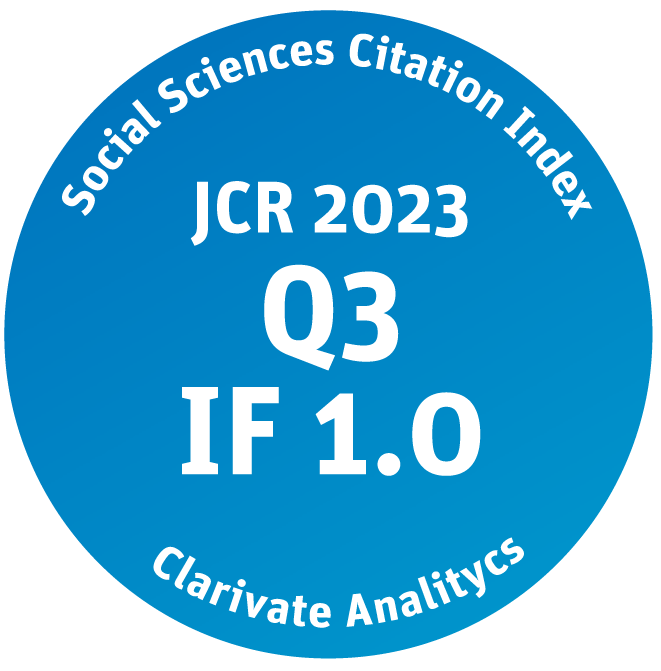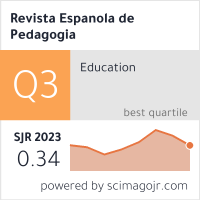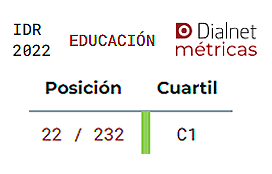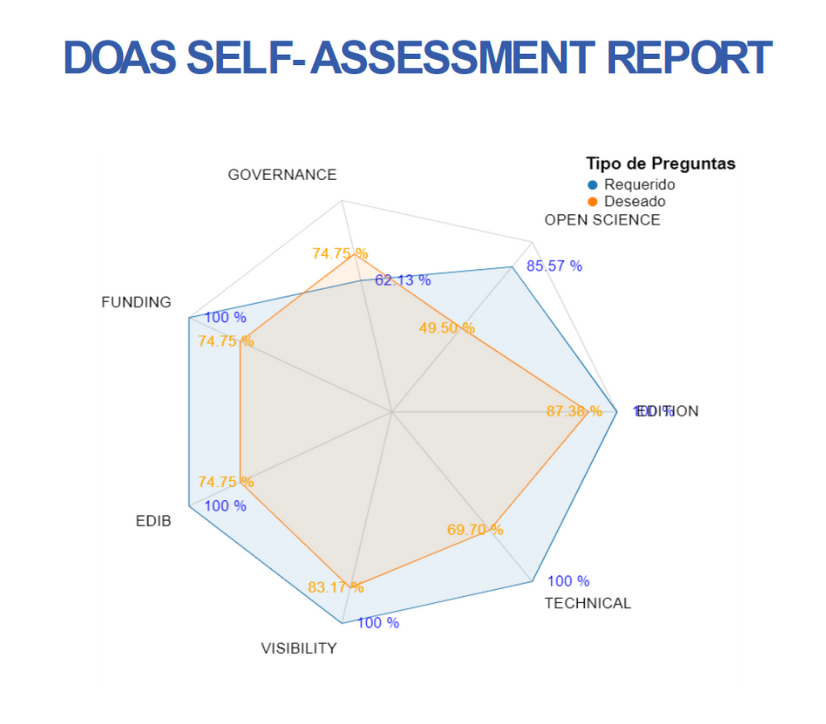Abstract
In just a few years, technological changes have transformed how people interact and communicate with each other, in particular among so-called digital adolescents. The impact of technology on routine activities and mainstream culture has led to an increase in young peoples’ exposure to psychological and criminological risks. As a result of this new psychosocial trend, new educational challenges are appearing and it is becoming more necessary to react to these challenges on the basis of an adequate diagnosis of psychology and pedagogy relating to adolescents.
Criminological theories and research have tried to identify risk and protection factors to understand victimisation processes in more depth and improve prevention strategies. In this context, it is necessary to develop educational programs that consider personal, familial, and situational vulnerabilities and weaknesses in order to foster resilient individuals who can successfully confront the risks inherent to cyberspace. By analysing specific forms of cybervictimisation, guidelines based on criminological research and the most frequent victimisation processes will be identified in order to improve design of educational programs focused on parents, educators and potential victims.
This is the English version of an article originally printed in Spanish in issue 273 of the revista española de pedagogía. For this reason, the abbreviation EV has been added to the page numbers. Please, cite this article as follows: Montiel, I., & Agustina, J. R. (2019). Retos educativos ante los riesgos emergentes en el ciberespacio: claves para una adecuada prevención de la cibervictimización en menores | Educational challenges of emerging risks in cyberspace: foundations of an appropriate strategy for preventing online child victimisation. Revista Española de Pedagogía, 77 (273), 277-294. doi: 10.22550/REP77-2-2019-03
Referencias | References
Agustina, J. R. (2010 a). ¿Menores infractores o víctimas de pornografía infantil? Respuestas legales e hipótesis criminológicas ante el Sexting. Revista Electrónica de Ciencia Penal y Criminología, 12 (11), 1-44.
Agustina, J. R. (2010 b). Conceptos clave, fenomenología, factores y estrategias en el marco de la violencia intrafamiliar. In J. R. Agustina (Ed.), Violencia intrafamiliar. Raíces, factores y formas de la violencia en el hogar (pp. 61-132). Madrid: BdeF-Edisofer.
Agustina, J. R. (2014). Cibercriminalidad y perspectiva victimológica: un enfoque general explicativo de la cibervictimización. Cuadernos de Política Criminal, 114 (3), 143-178.
Agustina, J. R., & Gómez-Durán, E. L. (2016). Factores de riesgo asociados al sexting como umbral de diversas formas de victimización. Estudio de factores correlacionados con el sexting en una muestra universitaria. Revista de Internet, Derecho y Política, 22, 21-47.
Agustina, J. R., & Montiel, I. (2017). Sexting en adolescentes: nuevos retos médico-legales. Revista Española de Medicina Legal, 43 (1), 43-44.
Aiken, M. (2017). The Cyber Effect: An Expert in Cyberpsychology explains how Technology is Shaping Our Children, Our Behavior, and Our Value and what We Can Do about it. New York: Spiegel & Grau.
Akers, R. L. (1990). Rational choice, deterrence, and social learning theory in criminology: The path not taken. Journal of Criminal Law & Criminology, 81, 653-676.
Balakrishnan, J., & Griffiths, M. D. (2018). An Exploratory Study of “Selfitis” and the Development of the Selfitis Behavior Scale. International Journal of Mental Health and Addiction, 16 (3), 722-736.
Baumgartner, S. E., Sumter, S. R., Peter, J., & Valkenburg, P. M. (2012). Identifying Teens at Risk: Developmental Pathways of Online and Offline Sexual Risk Behavior. Pediatrics, 130 (6), 1489-1496. doi: 10.1542/peds.2012-0842
Brand, M., Young, K. S., & Laier, C. (2014). Prefrontal control and Internet addiction: a theoretical model and review of neuropsychological and neuroimaging findings. Frontiers in human neuroscience, 8, 1-13. doi: 10.3389/fnhum.2014.00375
Calvete, E., Orue, I., & Gámez-Guadix, M. (2016). Cyberbullying Victimization and Depression in Adolescents: The Mediating Role of Body Image and Cognitive Schemas in a One-year Prospective Study. European Journal on Criminal Policy and Research, 22 (2), 271-284.
Carr, N. (2011). The shallows: what the Internet is doing to our brains. New York: WW Norton. Cohen, L. E., & Felson, M. (1979). Social Change and Crime Rate Trends: A Routine Activity Approach. American Sociological Review, 44 (4), 588-608.
Collins, S. G., Durington. M., Favero, P., Harper, K., Kenner, A., & O’Donnell, C. (2017). Ethnographic Apps/Apps as Ethnography. Anthropology Now, 9 (1), 102-18.
De Santisteban, P., & Gámez-Guadix, M. (2017). Estrategias de persuasión en grooming online de menores: Un análisis cualitativo con agresores en prisión. Psychosocial Intervention, 26 (3), 139-146.
Drouin, M., Vogel, K. N., Surbey, A., & Stills, J. R. (2013). Let’s talk about sexting, baby: Computer mediated behaviors among young adults. Computers in Human Behavior, 29, A25-A26.
Eynon, R., & Malmberg, L. E. (2011). A typology of young people’s Internet use: implications for education. Computers and Education, 56 (3), 585-595.
Favero, P. (2016). Analogization: Reflections on Life-Logging Cameras, Action Cams and Images’ Changing Meaning in a Digital Landscape. In E. G. Cruz, E. Lehmuskallio, & A. Lehmuskallio (Eds.), Digital Photography and Everyday Life: Empirical Studies on Material Visual Practices (pp. 209-27). New York: Routledge.
Favero, P. S., & Theunissen, E. (2018). With the Smartphone as Field Assistant: Designing, Making, and Testing EthnoAlly, a Multimodal Tool for Conducting Serendipitous Ethnography in a Multisensory World. American Anthropologist, 120 (1), 163-167.
Finkelhor, D. (2008). Childhood Victimization. Violence, Crime, and Abuse in the Lives of Young People. Oxford, USA: Oxford University Press.
Finkelhor, D., Ormrod, R. K., & Turner, H. (2007). Revictimization patterns in a national longitudinal
sample of children and youth. Child Abuse & Neglect, 31, 479-502.
Finkelhor, D., Turner, H., Ormrod, R., & Hamby, S. (2009). Violence, Abuse, and Crime Exposure in a National Sample of Children and Youth. Pediatrics, 124 (5), 1411-1423.
Gámez-Guadix, M., Almendros, C., Borrajo, E., & Calvete, E. (2015). Prevalence and association of sexting and online sexual victimization among Spanish adults. Sexuality Research and Social Policy, 12 (2), 145-154.
Gámez-Guadix, M., Almendros, C., Calvete, E., & de Santisteban, P. (2018). Persuasion strategies and sexual solicitations and interactions in online sexual grooming of adolescents: Modeling direct and indirect pathways. Journal of Adolescence, 63, 11-18.
García Guilabert, N. (2017). El ciberacoso. Análisis de la victimización en menores en el ciberespacio desde la teoría de las actividades cotidianas. Madrid: Editorial B de F.
Gassó, A. M., Fernández-Cruz, V., Montiel, I., Martin-Fumadó, C., & Agustina, J. R. (2018). Retos forenses ante la cibercriminalidad social en menores. Revista Española de Medicina Legal. doi: 10.1016/j.reml.2018.11.003
Gómez Cruz, E. (2012). De la cultura Kodak a la imagen en red: una etnografía sobre fotografía digital, 23. Barcelona: Editorial UOC.
Gottfredson, M. R., & Hirschi, T. (1990). A general theory of crime. Palo Alto, CA: Stanford University Press.
Greenfield, D. (2011). The addictive properties of Internet usage. In K. S. Young, C. N. de Arbeu (Eds.), Internet addiction: a handbook and guide to evaluation and treatment (pp. 135-53).
Hoboken, NJ: John Wiley. Han, B. C. (2014). Psicopolítica. Barcelona: Herder. Herrera Moreno, M. (2014). Construcción cultural y prevención criminal publicista: Una revisión de casos conflictivos. Revista Electrónica de Ciencia Penal y Criminología, 16-10, 10:1-10:48.
Hollis, M. E., Felson, M., & Welsh, B. C. (2013). The capable guardian in routine activities theory: A theoretical and conceptual reappraisal. Crime Prevention and Community Safety, 15 (1), 65-79.
Ibrahim, Y. (2015). Instagramming Life: Banal Imaging and the Poetics of the Everyday. Journal of Media Practice, 16 (1), 42-54.
Katz, J. (1988). Seductions of crime: Moral and sensual attractions in doing evil. New York: Basic Books.
Kirschner, P., & de Bruyckere, P. (2017). The myths of the digital native and the multitasker. Teaching and Teacher Education, 67, 135-142.
Knapp, T. J. (1976). A functional analysis of gambling behavior. In W. R. Edington (Ed.), Gambling and society (pp. 276-294). Springfield, IL: Charles C. Thomas.
Kowalski, R. M., Giumetti, G. W., Schroeder, A. N., & Lattanner, M. R. (2014). Bullying in the digital age: A critical review and meta-analysis of cyberbullying research among youth. Psychological Bulletin, 140 (4), 1073-1137.
Lapenta, F. (2011). Geomedia: On Location-Based Media, the Changing Status of Collective Image Production and the Emerging of Social Navigation Systems. Visual Studies, 26 (1), 14-24.
L’Ecuyer, C. (2015). Educar en la realidad. Barcelona: Plataforma Editorial.
L’Ecuyer, C. (2018). ¿Son nuestros alumnos nativos digitales? EDUForics. Retrieved from http://www.eduforics.com/es/son-nuestrosalumnos-nativos-digitales/ (Consulted on 11/02/2019).
Lee, S. J., & Chae, Y. G. (2007). Children’s Internet use in a family context: Influence on family relationships and parental mediation. Cyberpsychology & Behavior, 10 (5), 640-644.
Lin, X., Zhou, H., Dong, G., & Du, X. (2015). Impaired risk evaluation in people with Internet gaming disorder: fMRI evidence from a probability discounting task. Progress in Neuro-Psychopharmacology and Biological Psychiatry, 56, 142-148.
Livingstone, S., Haddon, L., Görzig, A., & Ólafsson, K. (2011). Risks and safety on the internet: The perspective of European children. Full findings and policy implications from the EU Kids Online survey of 9-16 year old and their parents in 25 countries. London: EU Kids Online. Retrieved from http://eprints.lse.ac.uk/33731/
Livingstone, S., & Helsper, E.J. (2008). Parental mediation of children’s Internet use. Journal of Broadcasting & Electronic Media, 52 (4), 581-599.
Livingstone, S., & Smith, P. K. (2014) Research Review: Harms experienced by child users of online and mobile technologies: The nature, prevalence and management of sexual and aggressive risks in the digital age. Journal of Child Psychology & Psychiatry, 55, 635-654.
Loh, K. K., & Kanai, R. (2014). How has the Internet Reshaped human cognition? Neuroscientist, 22 (5), 506-520.
Marcum, C., Higgins, G., & Ricketts, M. (2010). Potential factors of online victimization of youth: An examination of adolescent online behaviors utilizing Routine Activities Theory. Deviant Behavior, 31 (5), 1-31.
Martellozzo, E. (2013). Online Child Sexual Abuse: Grooming, Policing and Child Protection in a Multi-Media World. London: Routledge.
Mesch, G. S. (2009). Parental mediation, online activities, and cyberbullying. Cyberpsychology and Behavior, 12 (4), 387-393.
Miller, D. (2018). Digital anthropology. Cambridge Encyclopedia of Anthropology. Retrieved from http://www.anthroencyclopedia.com/entry/digital-anthropology (Consulted on 11/02/2019).
Miró, F. (2012). El cibercrimen. Fenomenología y criminología de la delincuencia en el ciberespacio. Madrid: Marcial Pons.
Miró, F., & García, N. (2014). Ciberapp: estudio sobre el alcance de la cibercriminalidad contra menores en la provincia de Alicante. Alicante: Diputación de Alicante.
Mitchell, K., Finkelhor, D., & Wolak, J. (2001). Risk factors for and Impact of Online Sexual Solicitation of Youth. Journal of the American Medical Association, 285 (23), 3011-3014.
Mitchell, K., Finkelhor, D., & Wolak, J. (2007). Youth internet users at risk for the most serious online sexual solicitations. American Journal of Preventive Medicine, 32, 532-537.
Montiel, I. (2016). Cibercriminalidad social juvenil: La cifra negra. Revista d’Internet, Dret i Polític, 22, 119-131.
Montiel, I. (2018). Ciberacoso sexual en adolescentes: creencias erróneas. Revista Iberoamenricana de Psicología, 11 (2).
Montiel, I., & Agustina, J. R. (2018). Victimización sexual de menores a través de las TIC. In D. Dupuy (Dir.) & M. Kiefer (Coord.), Cibercrimen II (pp. 405-442). Buenos Aires: Editorial BdeF.
Montiel, I., & Carbonell, E. (2016). Vulnerabilidad y riesgo en los adolescentes: perfil del jugador de azar online. In E. Echeburúa (Coord.), Abuso de Internet. ¿Antesala para la adicción al juego de azar online? (pp. 169-190). Madrid: Ediciones Pirámide.
Montiel, I., Carbonell, E., & Pereda, N. (2016). Multiple Online Victimization of Spanish Adolescents:
results from a community sample. Child Abuse and Neglect, 52, 123-134.
Montiel, I., Carbonell, E., & Salom, M. (2014). Victimización infantil sexual online: online grooming, ciber-abuso y ciber-acoso sexual. In M. Lameiras Fernández, & E. Orts Berenguer (Coords.), Delitos sexuales contra menores. Abordaje psicológico, jurídico y policial (pp. 203-224). Valencia: Tirant Lo Blanch.
Moore, R., Guntupalli, N. T., & Lee, T. (2010). Parental regulation and online activities: Examining factors that influence a youth’s potential to become a victim of online harassment. International Journal of Cyber Criminology, 4 (1/2), 685-698.
Navarro, R., Serna, C., Martínez, V., & Ruiz-Oliva, R. (2012). The role of Internet use and parental mediation on cyberbullying victimization among Spanish children from rural public schools. European Journal of Psychology of Education, 28 (3), 725-745.
Oliva, A., Antolín-Suárez, L., Ramos, P., Jiménez, L., Jiménez-Iglesias, A., Moreno, M. C., & Hidalgo, M. V. (2014). Adicciones con y sin sustancia: paralelismo. In M. T. Laespada, & A. Estévez (Eds.), ¿Existen las adicciones sin sustancia? (pp. 87-99). Bilbao: Universidad de Deusto.
Ortega-Barón, J., Buelga, S., & Cava, M. J. (2016). Influencia del clima escolar y familiar en adolescentes, víctimas de ciberacoso. Comunicar, 24 (46), 57-65.
Ortega y Gasset, J. (1914). Meditaciones del Quijote. Madrid: Imprenta Clásica Española.
Osgood, D. W., & Anderson, A. L. (2004). Unstructured socializing and rates of delinquency. Criminology, 42 (3), 519-550.
Pereda, N., Guilera, G., & Abad, J. (2014). Victimization and polyvictimization of Spanish children and youth: Results from a community sample. Child Abuse & Neglect, 38, 640-649.
Pink, S., & Hjorth, L. (2012). Emplaced Cartographies: Reconceptualising Camera Phone Practices in an Age of Locative Media. Media International Australia, 145 (1), 145-55.
Rettberg, J. W. (2014). Seeing Ourselves through Technology: How We Use Selfies, Blogs and Wearable Devices to See and Shape Ourselves. Basingstoke: Palgrave Macmillan.
Rowlands, I., Nicholas, D., Williams, P., Huntington, P., Fieldhouse, M., Gunter, B., & Tenopir, C. (2008). The Google generation: the information behaviour of the researcher of the future. Aslib proceedings, 60 (4), 290-310.
Sanjek, R., & Tratner, S. W. (2016). eFieldnotes: The makings of anthropology in the digital world. Philadelphia: University of Pennsylvania Press.
Silva Sánchez, J. Mª. (2018). La paradoja de la emancipación. Discourse given in the 2018 academic year at the inauguration ceremony of the Faculty of Law at the Pontifical Catholic University of Chile (130th anniversary). Santiago de Chile.
Sherman, L. E., Greenfield, P. M., Hernandez, L. M., & Dapretto, M. (2018). Peer influence via instagram: Effects on brain and behavior in adolescence and young adulthood. Child development, 89 (1), 37-47.
Sherman, L. E., Payton, A. A., Hernandez, L. M., Greenfield, P. M., & Dapretto, M. (2016). The power of the like in adolescence: Effects of peer influence on neural and behavioral responses to social media. Psychological Science, 27 (7), 1027-1035.
Slonje, R., Smith, P. K., & Frisén, A. (2013). The nature of cyberbullying, and strategies of prevention. Computers in Human Behavior, 29, 26-32.
Smith P. K. (2014). Understanding School Bullying: It’s Nature and Prevention Strategies. Thousand Oaks, CA: Sage Publications.
Smith, P. K., & Livingstone, S. (2017). Child Users of Online and Mobile Technologies-Risks, Harms and Intervention. In D. Skuse, H. Bruce, & L. Dowdney (Eds.), Child Psychology and Psychiatry: Frameworks for Clinical Training and Practice (pp.141-148). Hoboken, NJ: John Wiley & Sons, Inc.
Starcevic, V., Billieux, J., & Schimmenti, A. (2018). Selfitis, selfie addiction, twitteritis: irresistible appeal of medical terminology for problematic behaviours in the digital age. The Australian and New Zealand Journal of Psychiatry, 52 (5), 408-409.
Steeves, V., & Webster, C. (2008). Closing the barn door: the effect of parental supervision on Canadian children's online privacy. Bulletin of Science, Technology & Society, 28 (1), 4-19.
Suler, J. (2004). The online disinhibition effect. Cyberpsychology & behavior, 7 (3), 321-326.
Tacchi, J., Kitner, K. R., & Crawford, K. (2012). Meaningful Mobility. Feminist Media Studies, 12 (4), 528-537. doi: 10.1080/14680777.2012.741869
Tsitsika, A., Schoenmakers, T. M., Tzavela, E. C., Olafsson, K. Wójcik, S., Macarie, G. F., … Richardson, C. (2014). Internet Addictive Behavior in Adolescence: A Cross-Sectional Study in Seven European Countries. CyberPsychology, Behavior & Social Networking, 17 (8), 528-535.
Valcke, M., De Wever, B., Van Keer, H., & Schellens, T. (2011). Long-term study of safe Internet use of young children. Computers and Education, 57, 1292-1305.
Villacampa, C. (2017). Teen sexting: Prevalence, characteristics and legal treatment. International Journal of Law, Crime and Justice, 49, 10-21.
Walrave, M., & Heirman, W. (2011). Cyberbullying: Predicting victimisation and perpetration. Children & Society, 25 (1), 59-72.
Wang, J., Iannotti, R. J., & Nansel, T. R. (2010). School bullying among adolescents in the United States: Physical, verbal, relational, and cyber. Journal of Adolescent Health, 45 (4), 368-375.
Webster, S., Davidson, J., Bifulco, A., Gottschalk, P., Caretti, V., Pham, T., … Craparo G. (2012). Final Report-Executive Summary. European Online Grooming Project. Retrieved from http://www.crds.be/userfiles/files/European%20Online%20Grooming%20Project_Final%20Version_140312.pdf (Consulted on 11/02/2019).
Wells, M., & Mitchell, K. J. (2008). How do high-risk youth use the Internet? Characteristics and implications for prevention. Child Maltreatment, 13 (3), 227-234.
Whittle, H., Hamilton-Giachritsis, C., Beech, A., & Collings, G. (2013). A review of young people’s vulnerabilities to online grooming. Aggression and Violent Behavior, 18, 135-146.
Wolak, J., Finkelhor, D., & Mitchell, K. (2004). Internet-initiated sex crimes against minors: Implications for prevention based on findings from a national study. Journal of Adolescent Health, 35 (5), 424-e11–424-e20.
Wolak, J., Mitchell, K., & Finkelhor, D. (2003). Escaping or connecting? Characteristics of youth who form close online relationships. Journal of Adolescence, 26 (1), 105-119.
Wolf, G. (1996). Steve Jobs: The Next Insanely Great Thing. Wired. Retrieved from https://www.wired.com/1996/02/jobs-2/ (Consulted on 11/02/2019).
Yao, Y. W., Chen, P. R., Li, S., Wang, L. J., Zhang, J. T., Yip, S. W., & Fang, X. Y. (2015). Decision-making for risky gains and losses among college students with Internet gaming disorder. PloS one, 10 (1), e0116471. doi: 10.1371/journal.pone.0116471
Ybarra, M., & Mitchell, K. (2004). Youth engaging in online harassment: Associations with caregiver-child relationships, internet use, and personal characteristics. Journal of Adolescence, 27, 319-336.
Ybarra, M., Mitchell, K., & Korchmaros, J. (2011). National Trends in Exposure to and Experiencesof Violence on the Internet Among Children. Pediatrics, 128 (6), e1376-e1386.
Citación recomendada | Recommended citation
Montiel, I.,
&
Agustina, J. R.
(2019)
.
Educational challenges of emerging risks in cyberspace: foundations of an appropriate strategy for preventing online child victimization.
Revista Española de Pedagogía, 77(273).
https://www.revistadepedagogia.org/rep/vol77/iss273/12
Licencia Creative Commons | Creative Commons License
Esta obra está bajo una licencia internacional Creative Commons Atribución-NoComercial 4.0.
This work is licensed under a Creative Commons Attribution-NonCommercial 4.0 International License
Palabras clave | Keywords
communicatingtopreventcrime, criminologicaltheoriesusefulforeducation, cyberpsychology, cybervictimisationofminors, educationincyberspace, pedagogyofprosocialvalues
